Buy this illustration Yang Weizhen, Epitaph for the retired scholar Zhiting - (Chinese, 1296 - 1370), Yuan-dyna by Atelier Liesjes on canvas, ArtFrame, poster and wallpaper, printed on demand in high quality.
About "Yang Weizhen, Epitaph for the retired scholar Zhiting - (Chinese, 1296 - 1370), Yuan-dyna"
by Atelier Liesjes
About the artwork
Calligraphy served many purposes in elite Chinese culture; to name just a few, it was used for artistic expression, moral and philosophical statements, personal letters and other correspondence, additions to poetry, inscriptions on paintings and epitaphs and memorials. Different types of scripts were considered appropriate for different purposes; formal scripts were expected for epitaphs.
This long handscroll commemorates the life and lineage of an otherwise relatively unknown hermit and scholar named Zhiting (1301-1355). The calligrapher, Yang Weizhen, a minor official in the Yuan government, was known for his italic calligraphy. For this epitaph, he used a formal script. Although the characters flow into each other and there is much spontaneity in the brushwork, the characters are still legible and regular in size. Well-known calligraphers such as Yang often supplemented their income in hard times by writing such epitaphs.
Yuan dynasty (1279-1368)
Yáng Wéizhēn (Yang Wei-chen, traditional:楊維楨, simplified:杨维桢); ca. (1296 - 1370) was a Chinese painter and calligrapher during the Yuan Dynasty (1271-1368).
Yang was born in Zhejiang province. His style name was "Lianfu" and his nickname was "Tieya. Yang's reputation for calligraphy was widely known and brought a purity and strength to his works.
Perfect for use as a panorama on a wallpaper.

About Atelier Liesjes
Art for sale. Shop with photos and art as wall decoration. Posters, metal (aluminium or steel), glass, canvas, photo print, wood, framed, canvas, photo wallpaper or garden canvas.
The collection of wall decoration or wall decorations is very broad, from nature through..
Read more…
 Netherlands
Netherlands Ordered in April 2023
Ordered in April 2023
 Netherlands
Netherlands Ordered in May 2020
Ordered in May 2020
 Netherlands
Netherlands Ordered in November 2018
Ordered in November 2018
 Netherlands
Netherlands Ordered in November 2020
Ordered in November 2020
 Netherlands
Netherlands Ordered in December 2021
Ordered in December 2021
 Germany
Germany Ordered in September 2025
Ordered in September 2025
 Netherlands
Netherlands Ordered in June 2019
Ordered in June 2019
 Germany
Germany Ordered in September 2019
Ordered in September 2019
 Germany
Germany Ordered in April 2021
Ordered in April 2021
 Germany
Germany Ordered in December 2019
Ordered in December 2019
 Netherlands
Netherlands Ordered in June 2022
Ordered in June 2022
 Netherlands
Netherlands Ordered in January 2016
Ordered in January 2016
About the material
ArtFrame™
Interchangeable Art Prints
- High-quality print
- Easily interchangeable
- Acoustic function
- Large sizes available
Discover the artworks of Atelier Liesjes
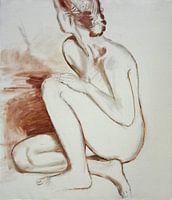 Nude sexy woman crouching, Hubertine HeijermansAtelier Liesjes
Nude sexy woman crouching, Hubertine HeijermansAtelier Liesjes India, manAtelier Liesjes
India, manAtelier Liesjes The farmer's wife, naked model posing as a pinup in a windowAtelier Liesjes
The farmer's wife, naked model posing as a pinup in a windowAtelier Liesjes two people in a shopping street in the 70sAtelier Liesjes
two people in a shopping street in the 70sAtelier Liesjes The beauty; Erotic nude in the showerAtelier Liesjes
The beauty; Erotic nude in the showerAtelier Liesjes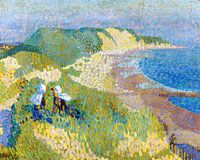 Sea and dunes near Zoutelande, Jan Toorop,Atelier Liesjes
Sea and dunes near Zoutelande, Jan Toorop,Atelier Liesjes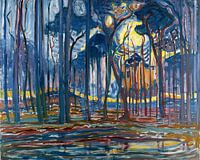 Piet Mondriaan, Bosch; Bos bij Oele, 1908Atelier Liesjes
Piet Mondriaan, Bosch; Bos bij Oele, 1908Atelier Liesjes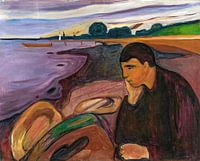 Edvard Munch, melancholy, 1896Atelier Liesjes
Edvard Munch, melancholy, 1896Atelier Liesjes Costumed ball, Max RabesAtelier Liesjes
Costumed ball, Max RabesAtelier Liesjes Reclining Nude, George Hendrik Breitner - 1887Atelier Liesjes
Reclining Nude, George Hendrik Breitner - 1887Atelier Liesjes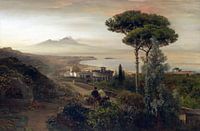 Vesuvius and Bay of Naples, OSWALD ACHENBACH, 1884Atelier Liesjes
Vesuvius and Bay of Naples, OSWALD ACHENBACH, 1884Atelier Liesjes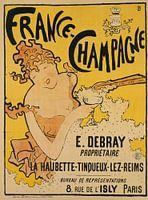 Poster with advertisement for France-Champagne - Pierre Bonnard, 1889-1897Atelier Liesjes
Poster with advertisement for France-Champagne - Pierre Bonnard, 1889-1897Atelier Liesjes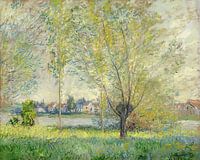 Willows in a landscape, Claude Monet (1880)Atelier Liesjes
Willows in a landscape, Claude Monet (1880)Atelier Liesjes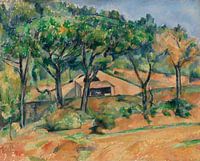 House in Provence, Paul Cézanne (ca.1890)Atelier Liesjes
House in Provence, Paul Cézanne (ca.1890)Atelier Liesjes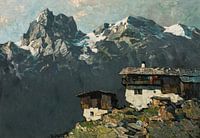 Oskar Mulley, Mountain farm, ca 1930Atelier Liesjes
Oskar Mulley, Mountain farm, ca 1930Atelier Liesjes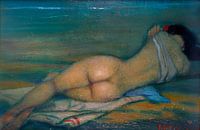 Federico Beltrán Masses, NudeAtelier Liesjes
Federico Beltrán Masses, NudeAtelier Liesjes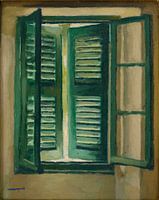 Green shutters, Albert Marquet, 1944-46Atelier Liesjes
Green shutters, Albert Marquet, 1944-46Atelier Liesjes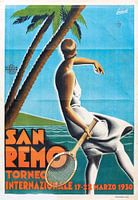 San Remo - International tournament, Gino Boccasile, 1930Atelier Liesjes
San Remo - International tournament, Gino Boccasile, 1930Atelier Liesjes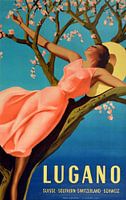 Gino Boccasile, Travel poster Lugano Suisse South Switzerland Schweiz, 1939Atelier Liesjes
Gino Boccasile, Travel poster Lugano Suisse South Switzerland Schweiz, 1939Atelier Liesjes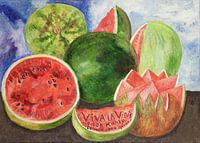 Frida, Viva la vida, 1954Atelier Liesjes
Frida, Viva la vida, 1954Atelier Liesjes








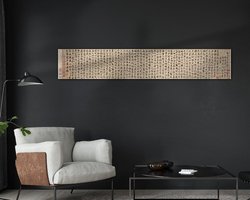




 Illustrations
Illustrations Serene Peace
Serene Peace Typography
Typography









